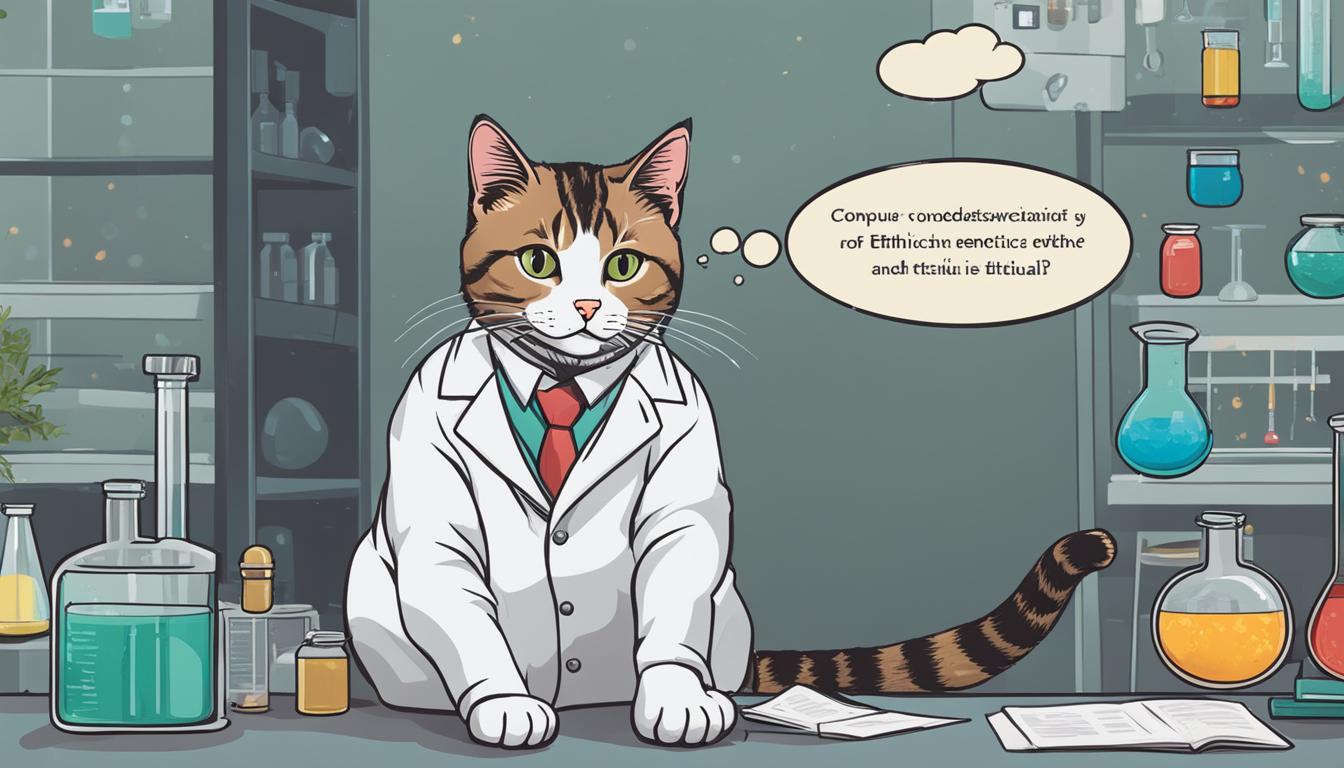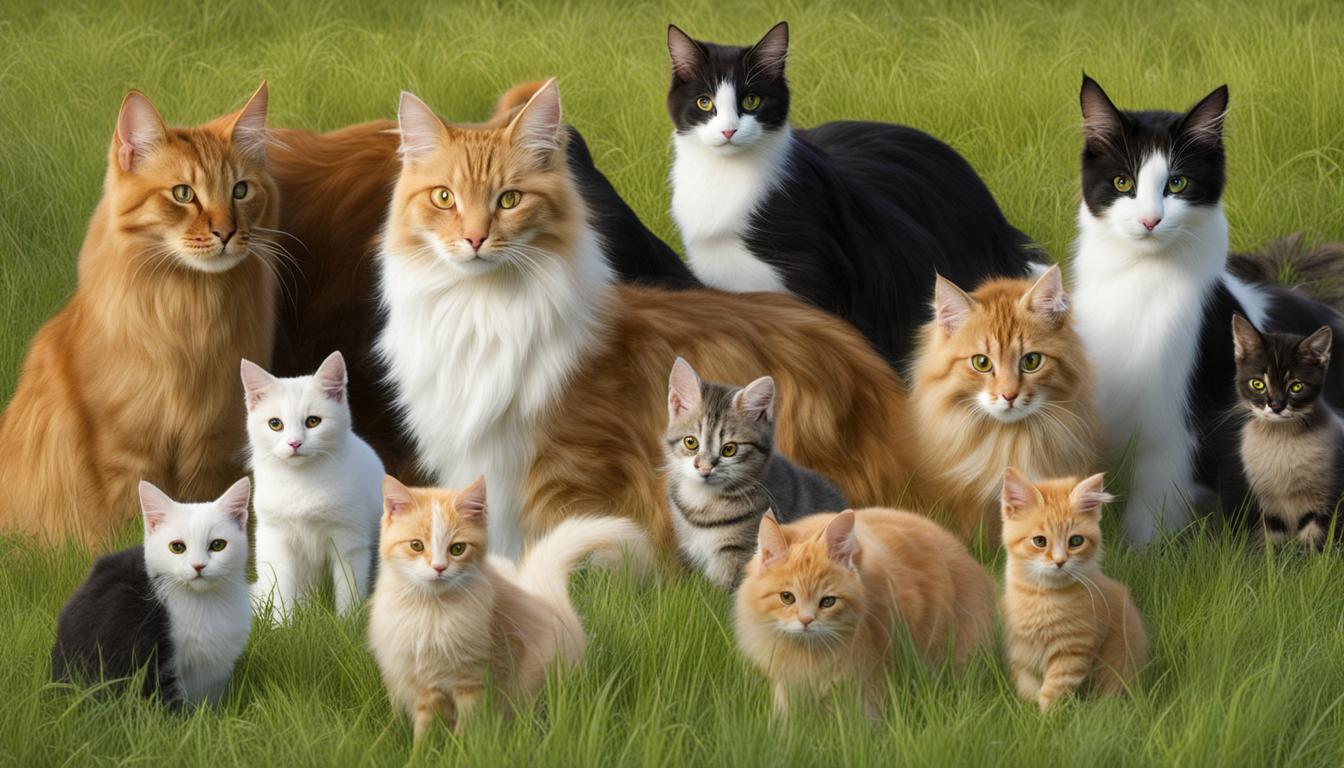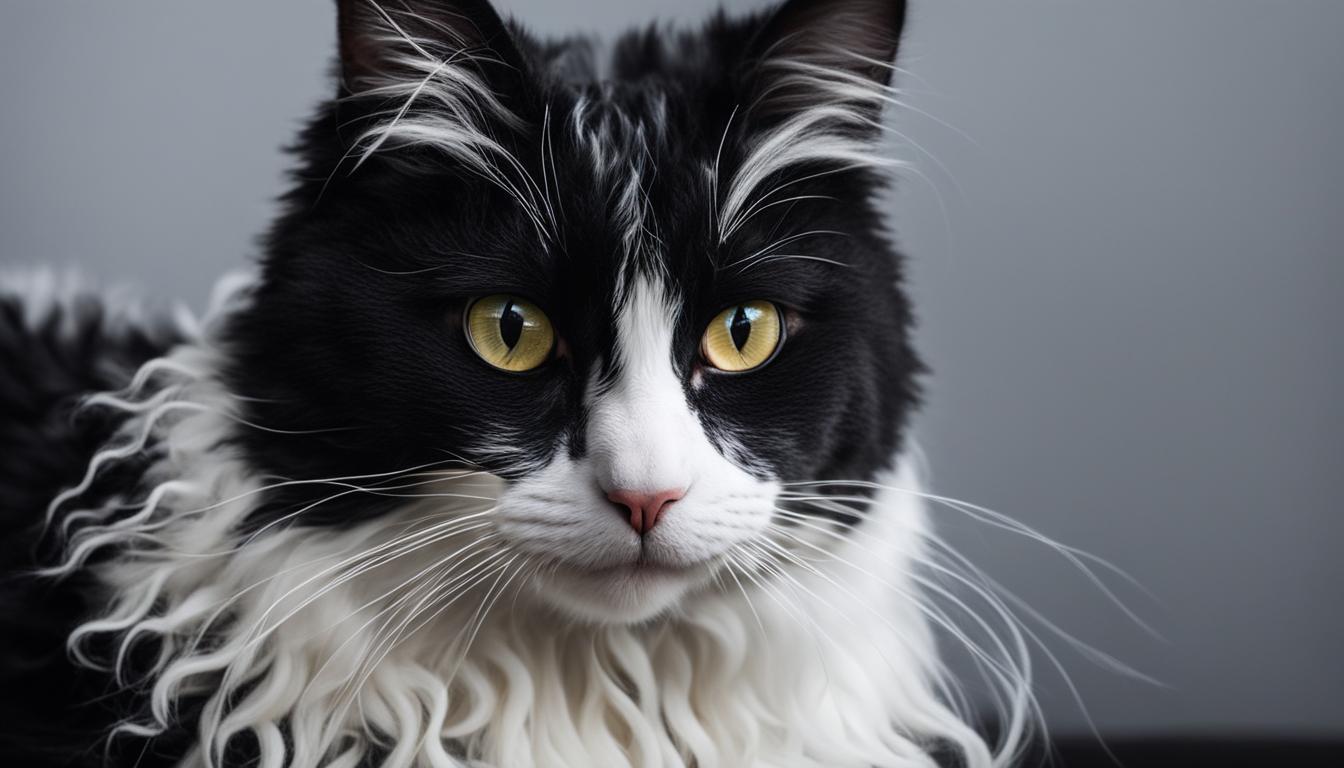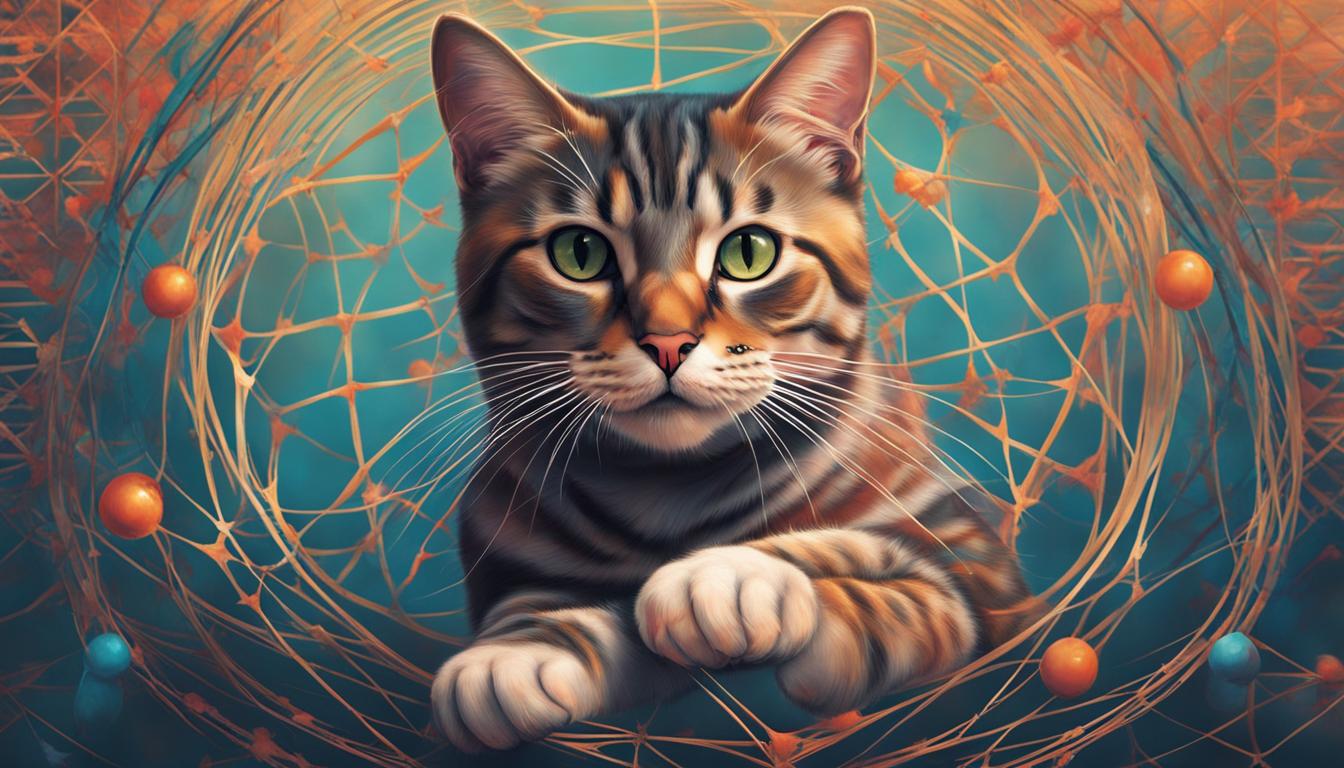Have you ever wondered about the secret behind a cat’s retractable claws? I, for one, have always been intrigued by this fascinating feature that sets them apart from other animals. It turns out that the answer lies deep within their genetics, and recent studies have shed some light on this mysterious phenomenon.
Geneticists have traditionally focused more on studying dogs than cats, but advancements in DNA sequencing technology have opened up exciting opportunities for exploring the genomics of feline species. Researchers are now delving into the genomes of domestic cats to unravel the mutations responsible for various conditions in both humans and cats themselves.
One particular area of interest is the genetics behind cat claw retraction. By sequencing cat genomes, scientists hope to gain insights into the evolutionary aspects of this unique trait. Understanding the DNA behind cats’ retractable claws could provide valuable information on how such adaptations have developed over time.
Key Takeaways:
- Geneticists are now studying the genomes of domestic cats to explore the mutations that underlie conditions affecting both humans and felines.
- Sequencing cat genomes allows scientists to gain insights into the genetics behind cat claw retraction and its evolutionary aspects.
- Understanding the DNA behind cats’ retractable claws provides valuable information on the unique adaptations of feline species.
- Advancements in DNA sequencing technology have opened up exciting opportunities for genetic research on cat claw mechanisms.
- Exploring the genetics of cat claw retraction sheds light on the mysteries of cats’ remarkable traits.
The Fascinating Anatomy of Cat Paws
Cat paws may seem simple at first glance, but they are actually marvels of nature’s design. Their intricate anatomy is tailored to meet the unique needs of these agile and efficient predators. Let’s delve into the structure and features that make cat paws so fascinating.
One of the most distinctive features of cat paws is their soft, padded surfaces. These cushions serve multiple purposes, providing comfort and protection while cats walk, run, and leap. The soft pads also aid in silent stalking, allowing cats to approach their prey undetected.
Another remarkable aspect of cat paws is their retractable claws. Unlike dogs, whose claws are permanently exposed, cats have the ability to retract their sharp claws when not in use. This adaptation not only helps preserve the claws’ sharpness but also allows cats to maintain better grip and balance while climbing or navigating various surfaces. It also enables them to engage in playful batting and swiping motions.
| Unique Features of Cat Paws: | Description: |
|---|---|
| Padded Surfaces | Cushions for comfort and silent movement |
| Retractable Claws | Aids in climbing, balance, and hunting |
| Scent Glands | Allow cats to mark territory and communicate |
Additionally, cat paws contain scent glands that play a crucial role in communication. When cats scratch surfaces, they leave behind their unique scent, marking their territory and signaling their presence to other cats. These scent glands also contribute to the complex language of cat communication.
Understanding the anatomy of cat paws allows us to appreciate the remarkable adaptations that have made cats such agile and successful hunters. So, next time you observe your feline friend’s paws, take a moment to marvel at the fascinating features that make them truly extraordinary.
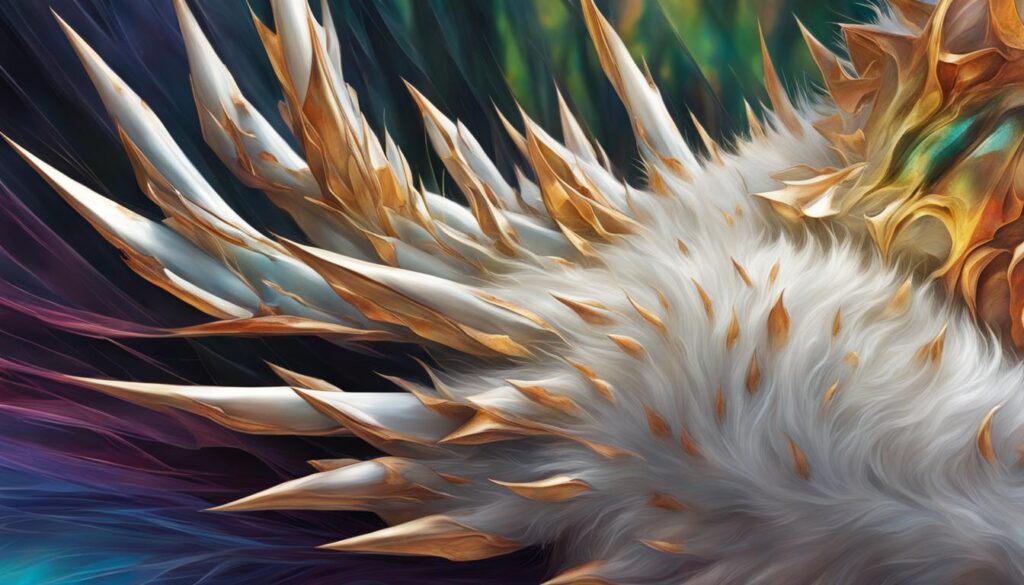
The Little-Known Wonders of Toe Beans
While exploring the anatomy of cat paws, we cannot overlook the delightful “toe beans.” These fleshy pads, located on the underside of a cat’s paw, have some intriguing functions.
Toe beans are the adorable little pads that cover the bony structures of a cat’s toes, providing cushioning and stability.
Beyond their undeniable cuteness, toe beans serve a critical purpose in a cat’s movements. The pads’ remarkable sensitivity allows cats to detect and interpret tactile information, contributing to their exceptional balance and coordination. This heightened sensitivity comes from the numerous nerve endings present in the toe beans, making them powerful tools for precise navigation of different surfaces.
Furthermore, toe beans enable cats to feel the texture of objects they come into contact with, providing them with valuable feedback about their surroundings. It’s akin to a cat’s built-in sensory system, helping them make rapid adjustments and ensuring their precise paw placement, especially in challenging environments such as climbing trees or stalking prey.
Next time you find yourself admiring those adorable toe beans, remember that they are not just cute, but also an essential part of a cat’s amazing capabilities.
The Surprising Functions of Cat Paws
When it comes to our feline companions, their paws are more than just cute little appendages. Cat paws serve a multitude of functions that contribute to a cat’s overall well-being and survival. From grooming to balance and agility, these remarkable creatures rely on their paws for various tasks. Let’s delve into the fascinating world of cat paws and explore their surprising functionalities.
Grooming with Paws
Cats are known for their meticulous grooming habits, and their paws play a crucial role in this process. Using their paws and rough tongues, cats clean their bodies and faces. The soft pads on their paws act as gentle brushes, helping them remove dirt, debris, and loose fur from their fur coats. It’s a sight to behold as they meticulously lick their paws and run them through their fur, ensuring that they remain clean and well-groomed.
Balance and Agility
One of the most remarkable aspects of a cat’s paw is its ability to provide balance and agility. The soft pads on their paws act as natural shock absorbers, allowing them to land silently and stealthily while hunting or exploring their surroundings. These pads also provide cats with excellent traction, allowing them to navigate various surfaces with grace and precision. Whether they’re leaping from high perches or tiptoeing along narrow ledges, their paws provide the stability and dexterity needed for their acrobatic feats.
The Functionality of Retractable Claws
Perhaps one of the most intriguing aspects of cat paws is their retractable claws. Cats have the unique ability to extend and retract their claws as needed. This remarkable feature serves multiple functions. By retracting their claws when they’re not in use, cats can keep them sharp and protected, ensuring they are always ready for hunting or self-defense. When extended, these claws provide cats with the control and grip they need to climb trees, scratch surfaces, and catch prey. It’s a true marvel of nature that allows cats to adapt their claws to different situations and environments.
Cat paws are truly remarkable, serving a wide range of functions that aid in grooming, balance, agility, and more. By appreciating the versatility and adaptability of cat paws, we gain a better understanding of these fascinating creatures and the unique traits that make them such agile predators.
The Secrets of Polydactyl Cats Unveiled
When it comes to feline genetics, one intriguing phenomenon is the presence of polydactyl cats. These cats possess extra toes, a genetic mutation that sets them apart from their four-toed counterparts. The fascinating thing about polydactylism is that it can give cats a unique and adorable appearance, with some even resembling they have thumbs. But what exactly causes this extra digit phenomenon?
While the exact cause of polydactylism is not fully understood, researchers believe it is inherited through a dominant gene. This means that cats with polydactyl parents have a higher likelihood of inheriting the mutation themselves. The presence of extra toes can vary, with some cats having just one or two extra digits, while others may have as many as seven. These additional toes can provide polydactyl cats with enhanced climbing and hunting abilities, making them exceptional in their environments.
“Polydactyl cats are a wonderful example of how genetic mutations can result in unique and fascinating traits,” says Dr. Jane Thompson, a renowned expert in feline genetics. “Their extra toes not only make them visually appealing but also contribute to their agility and dexterity.”
| Polydactyl Cats | Non-Polydactyl Cats | |
|---|---|---|
| Number of Toes | Varies, usually more than the average 18 | 18 (5 toes on front paws, 4 on back paws) |
| Appearance | Unique and adorable | Typical |
| Enhanced Abilities | Improved climbing and hunting | Standard |
One famous aficionado of polydactyl cats was the renowned author Ernest Hemingway, who had a deep affection for these unique felines. Hemingway’s former home in Key West, Florida, is now a museum and home to approximately 40 polydactyl cats, many of which are direct descendants of his original pets. The impact of polydactylism stretches beyond just their genetics, showcasing how these extraordinary cats can leave a lasting legacy.
As we unravel the mysteries behind the genetics of polydactyl cats, we gain a deeper appreciation for the diversity of feline traits and the wonders of their genetic makeup. The extra toes of polydactyl cats serve as a reminder of the powerful influence genetics can have on shaping the physical characteristics of these beloved creatures.
The Language of Cat Paws Unveiled
When it comes to communication, cats have a unique language that extends beyond their meows and purrs. One of the lesser-known aspects of feline communication lies in their paws. Cat paws are not only adorable and functional, but they also play a significant role in conveying messages and marking territory.
Scratching is not just a way for cats to maintain their claws; it’s also a form of communication. When cats scratch surfaces, they release pheromones from scent glands located in their paws. These pheromones act as chemical signals, leaving behind a message for other cats to decipher.
In addition to scratching, different paw movements and positions can also convey specific meanings. Kneading, for example, is a behavior commonly associated with contentment and relaxation. This rhythmic motion, where cats push their paws in and out against a soft surface, is reminiscent of the actions kittens take while nursing. It’s a behavior that often signals a state of comfort and happiness.
Cats also use paw swipes to communicate. Whether it’s during grooming or asserting dominance, paw swipes can serve as messages to other cats or even humans. These swipes are often subtle gestures, but they can convey a wealth of information, from grooming rituals to establishing boundaries.
| Scent glands in cat paws | Communication through cat paws | Paw movements and positions of cats |
|---|---|---|
| Cat paws contain scent glands that release pheromones when scratched. | Scratching communicates messages to other cats, leaving behind chemical signals. | Kneading signifies contentment and relaxation, while paw swipes serve various communication purposes. |
| Cat paw swipes can convey grooming rituals and establish boundaries. |
Understanding the language of cat paws can deepen our bond with these curious creatures. By observing their paw movements, we gain insight into their emotions, needs, and social interactions. So the next time your feline friend kneads your lap or gracefully swipes at their toys, remember that their paws are speaking volumes in their silent language of communication.
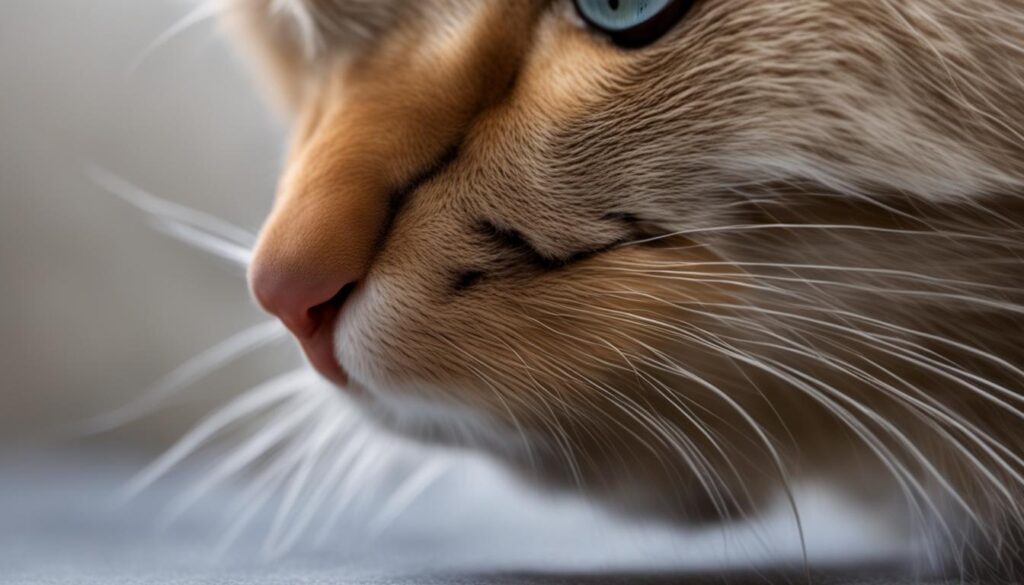
The Evolution of Feline Paws
When it comes to the evolution of feline paws, cats have undergone remarkable adaptations over time. These specialized hunting tools have been shaped by millions of years of natural selection, resulting in a paw structure that is unique to the feline species. Compared to other animals such as dogs or cheetahs, cat paws exhibit distinct features that suit their agile and predatory lifestyle.
One notable evolutionary aspect of cat paws is the development of flexible, retractable claws. Fossil evidence reveals that the earliest known cats already possessed this characteristic, which has since become a defining trait of the feline species. The ability to retract their claws enables cats to maintain sharpness and prevent unnecessary wear and tear when not in use. It also allows for precise control and grip while hunting or climbing.
Furthermore, cat paws have undergone adaptations in terms of claw shape and sensitivity. Over time, the claws of cats have become sharper and more curved, enhancing their hunting capabilities. In addition, the sensitive toe pads on their paws enable them to detect vibrations and navigate various terrains with ease. These adaptations have given cats a competitive advantage in their environments, allowing them to excel as agile and efficient predators.
| Comparison of Feline Paws to Other Animals | Features |
|---|---|
| Cats | Flexible, retractable claws; sharp and curved claws; sensitive toe pads |
| Dogs | Non-retractable claws; blunt and straight claws; less sensitivity in toe pads |
| Cheetahs | Non-retractable claws; semi-retractable claws during running; long and curved claws for traction at high speeds |
As seen in the comparison table, the feline paw’s unique adaptations set cats apart from other animals. The flexibility and retractability of their claws, the sharpness and curvature, and the sensitive toe pads all play key roles in facilitating a cat’s hunting prowess and overall survival. These evolutionary changes have shaped the modern cat paw into a remarkable tool that allows cats to thrive in various environments.
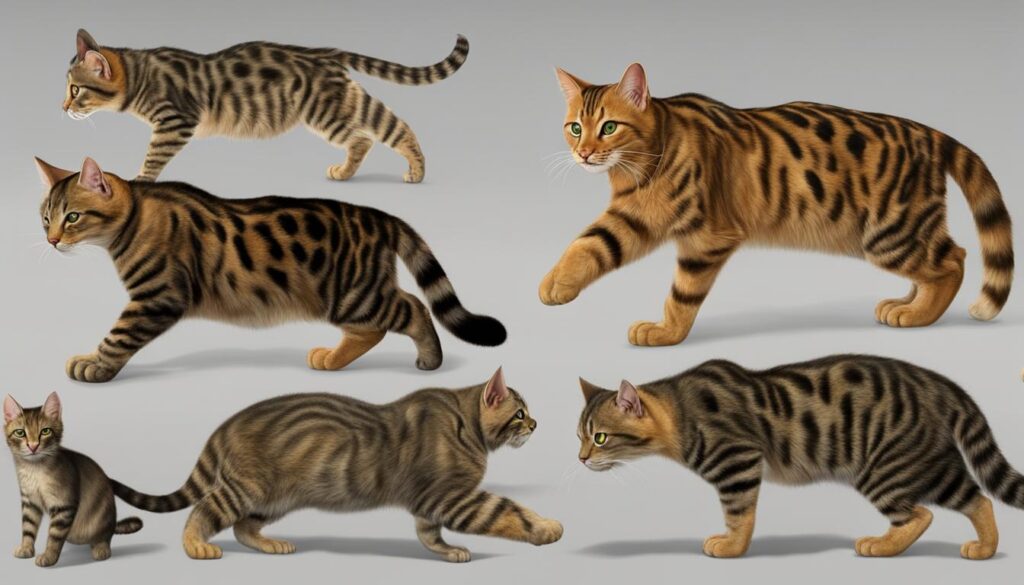
The Functionality of Toe Beans
Cat paw pads, often referred to as toe beans or digital pads, serve a vital purpose in a cat’s daily life. These fleshy pads play a significant role in a cat’s movements and overall functionality, providing cushioning, grip, and sensory feedback that contribute to their agile navigation of the world.
Toe beans are incredibly sensitive, allowing cats to perceive the texture and temperature of surfaces. This heightened sensitivity enables them to make precise adjustments while walking, climbing, and hunting. The toe beans act as natural shock absorbers, providing stability and enhancing a cat’s balance and coordination.
Furthermore, the sensitivity of toe beans allows cats to receive tactile feedback, aiding in their interaction with objects and the environment. The cushioning provided by the pads helps to distribute their weight evenly, reducing the impact on their joints and ensuring a smooth, graceful gait. It’s fascinating to witness how cats rely on their toe beans to effortlessly leap and land with such grace and precision.

The Versatility of Toe Beans
The utility of toe beans extends beyond their role in movement and balance. Cats also utilize their toe beans during grooming sessions, using their carefully controlled paw movements to clean their faces with precision. The pads’ textured surface aids in this process, allowing the removal of dirt and debris from their fur.
Additionally, the shape and flexibility of toe beans enable cats to grasp objects. You may have observed your cat playfully batting at toys or gently patting your hand, showcasing the fine motor skills made possible by their toe beans. These undeniably adorable features are not just cute; they’re an integral part of a cat’s physical abilities.
In conclusion, toe beans are a remarkable and multifunctional aspect of a cat’s anatomy. From providing cushioning and grip to enhancing balance and coordination, these little pads play a vital role in a cat’s daily activities. Next time you see your feline friend stretching or engaging in a playful paw display, take a moment to appreciate the ingenuity and versatility of their toe beans.
Conclusion
As I conclude my exploration into the genetics and anatomy of cat claws and paws, I am left in awe of the complexities and wonders that make our feline friends so fascinating. Through advancements in DNA sequencing, researchers have made significant strides in understanding the genetic makeup behind the retractable claws that are unique to cats. This breakthrough opens doors to further investigations into the evolutionary journey that has shaped their paw adaptations.
Delving deeper into the intricacies of cat paws, we uncover a world of remarkable functionality. From the soft and padded surfaces that provide comfort and agility, to the retractable claws that offer unparalleled traction and control, every aspect of a cat’s paw serves a purpose. These paws play a vital role in grooming, balance, and communication, allowing cats to navigate their surroundings with grace and finesse.
Through the lens of polydactyl cats, we gain insight into the captivating world of genetic mutations. These extra-toed felines showcase the incredible diversity within the feline species, with their unique thumbs providing enhanced climbing and hunting abilities. It’s no wonder that famous individuals, like Ernest Hemingway, have been captivated by their charm.
In summary, our journey through the mysteries of cat claws and paws has been eye-opening. From the secrets hidden within each toe bean to the genetic codes that govern claw retraction, we have unraveled the enigma that is the feline paw. By understanding these intricate details, we can develop a deeper appreciation for the marvels of nature and the captivating creatures that share our lives.
FAQ
What is the significance of studying the genetics of cat claw retraction?
Studying the genetics of cat claw retraction can provide insights into the evolutionary aspects of this unique trait and shed light on the mutations that underlie conditions affecting both humans and felines.
What are some of the functions of cat paws?
Cat paws serve a variety of functions, including grooming, balance and agility, traction and control, and communication through scent marking and paw movements.
What causes polydactylism in cats?
Polydactylism in cats is caused by a genetic mutation, although the exact cause is not fully understood. It is believed to be inherited through a dominant gene and can give cats extra toes or even thumbs.
How do cat paws contribute to communication?
Cat paws contribute to communication through the presence of scent glands, which allow cats to mark their territory. Paw movements, such as kneading and swiping, also convey messages and can indicate contentment, relaxation, grooming, or dominance.
What is the evolutionary history of cat paws?
Fossil evidence shows that the earliest known cats had flexible, retractable claws similar to modern cats. Over time, their claws became sharper and more curved, providing better grip and precision in hunting. Cat paws also possess sensitive toe pads that allow them to detect vibrations and navigate different terrains.
What is the role of toe beans in cat paws?
Toe beans, the fleshy pads on a cat’s paws, play a crucial role in a cat’s movements and overall functionality. They provide cushioning and grip, enhance balance and coordination, and allow cats to feel the texture of surfaces and receive tactile feedback.


